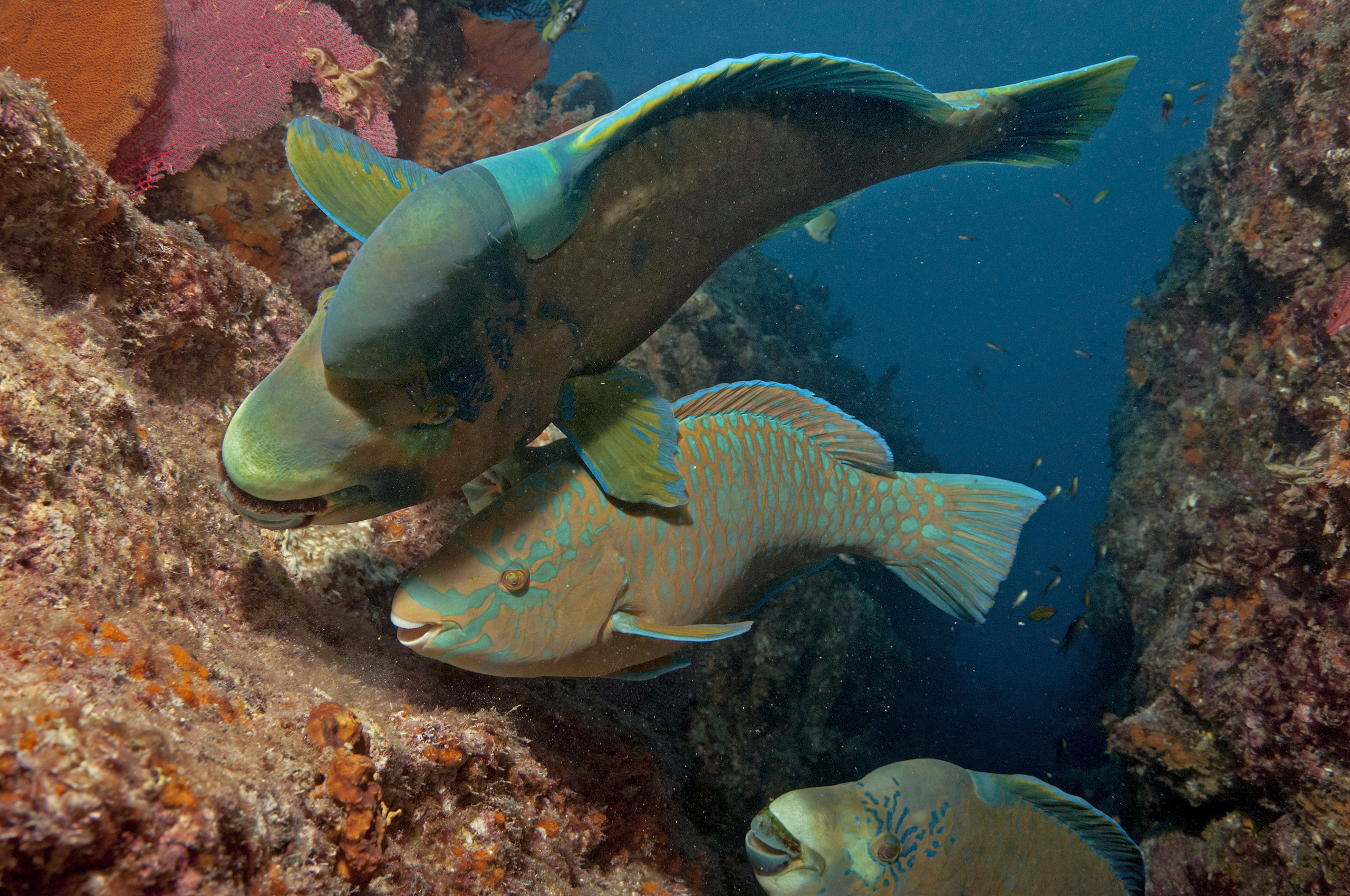Keywords:
Productivity and recovery of rocky reefs in the Gulf of California.

Globally, the deterioration of reefs has been greatly increased by overexploitation of fish stocks (1). When fish populations decline, the health and function of reefs deteriorates (2). For example, in the absence of herbivores that feed on algae, the algae proliferates and covers the corals, causing their death and changes in fish populations, in productivity and an uptake of calcium carbonate (3).
In the Gulf of California there are few studies that determine the fishery productivity of reef systems. Here we present a case study focused on four species of great ecological and commercial importance, more frequent and abundant in the rocky reefs of the region: parrotfish (Scarus rubroviolaceus, Scarus ghobban, Scarus perrico and Scarus compressus) belong to the Scaridae family and their diet is based mainly on algae (herbivores). Its main ecological function is to control the growth of algae that compete for the same space as corals. They are important producers and transporters of sediment and intervene in the recruitment of new coral colonies by cleaning the area where the new coral will settle.
Parrotfish are an important resource for small-scale fishers. Its soft, white flesh is considered top quality and can be sold at a high price. Due to its high demand in local markets, the populations of this group have decreased in the last 20 years. However, it is possible to recover their populations and their function in rocky reefs.
To be able to propose effective management strategies it is necessary to know: what and how much rocky habitat is available for parrotfish to live in and how many can this area harbor? Which reefs in Baja California Sur produce a greater number of parrotfish per year? Where is the largest catch volume of parrotfish per year? How long will it take for parrotfish populations to recover in the rocky reefs of the region?
We use ecological monitoring data from the Gulf of California Marine Program (2001-2015) to estimate average sizes, abundances and volumes of parrotfish. In addition, we use CONAPESCA catch data (2001-2015), habitat distribution data (4), fishing effort distribution calculations (5), the carrying capacity (K) of the rocky reefs of the Gulf of California and the intrinsic population growth rate (r) of the fish.
Main findings
In the municipalities of La Paz and Loreto in Baja California Sur, the available area of rocky reef for parrotfish populations is 18,7860 hectares. In the past and in pristine conditions, these reefs had the capacity to hold around 1,678 tons of parrotfish, which in turn would reproduce and yield around 179 tons annually (after considering predation and mortality). However, we estimate that currently there is an available biomass of about 400 tons, which produces only 68 tons per year.
A total of 44 tons of parrotfish are fished annually. For the populations of parrotfish in these reefs to reach their optimal levels, and for the fishery to operate in a sustainable manner, the area would require no fishing for 9.5 years. If we allow parrotfish populations to recover, catch volume could increase from 44 to 133 tons. The difference represents the surplus of the population that can be captured by keeping the populations of these species healthy.
Conclusions
It is necessary to consider several factors to achieve good management of rocky reefs, such as habitat availability, carrying capacity, catch volumes, biological parameters (growth) of species and population, as well as oceanographic parameters. This type of analysis will allow us to improve fishing management strategies that can maintain healthy fishing populations while generating economic benefits for fishermen and allows consumers to enjoy this food.
Photograph: Octavio Aburto-Oropeza
Authors:
Ismael Mascareñas-Osorio*, Ramiro Arcos Aguilar*, Benigno Guerrero*, Octavio Aburto**.
Contact Information:
ismael.mascarenas@gocmarineprogram.org
DOI:
https://doi.org/10.13022/M3CH1B
Affiliations:
* Centro para la Biodiversidad Marina y la Conservación A.C., La Paz B.C.S. ** Scripps Institution of Oceanography, San Diego, CA., U.S.A.
Acknowledgements:
How to cite this story:
Ismael Mascareñas-Osorio, Ramiro Arcos Aguilar, Benigno Guerrero, Octavio Aburto (2018): Productivity and recovery of rocky reefs in the Gulf of California. dataMares. InteractiveResource. https://doi.org/10.13022/M3CH1B
References
- Aburto-Oropeza O., Erisman B., Galland G.R., Mascarenas-Osorio I., Sala E.,
Ezcurra E. 2011. Large Recovery of Fish Biomass in a No-Take Marine Reserve. Plos One. 6:8 e23601 - MacNeil, M.A., Nicholas A. J.G., Cinner J.E., Wilson S.E., Williams, I.D. Newman S.J.M., Friedlander A.M. Jupiter S., Polunin N.V. C., McClanahan T.R. 2015. Recovery potential of the world’s coral reef fishes. Nature. doi:10.1038/nature14358.
- Pauly D., Watson R., Alder J. 2005. Global trends in world fisheries impacts on marine ecosystems and food security. Philosophical Transactions of the Royal Society 360: 5–12.
- Andrew Frederick Johnson, Alfredo Girón-Nava, Marcia Moreno-Baez, Andres Cisneros, Alvin Suárez, Octavio Aburto-Oropeza (2016): Distribución de los hábitats marinos en el Golfo de California. DataMares. InteractiveResource. http://dx.doi.org/10.13022/M3NC7Q
- Marcia Moreno-Baez, Alfredo Girón-Nava, Octavio Aburto-Oropeza, Andrew F Johnson, Júlia Corominas, Brad Erisman, Exequiel Ezcurra. (2015): Calculando la Distribución del esfuerzo pesquero en el Golfo de California, México. DataMares. InteractiveResource. http://dx.doi.org/10.13022/M3G013

